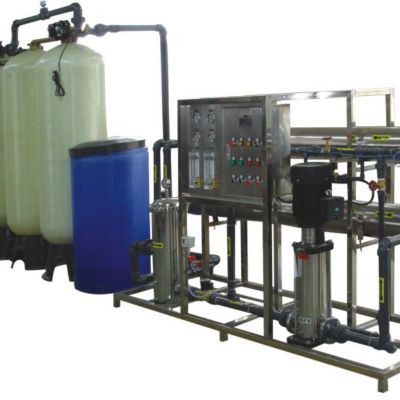Working process of reverse osmosis equipment

The working process of reverse osmosis equipment can be roughly divided into the following steps:
1. Under low pressure, the air in the system is driven out to ensure that there is no air interference inside the system.
2. Check and eliminate system leaks to ensure system tightness.
3. Use low-pressure water to flush the protective solution of the membrane element out of the permeator to protect the reverse osmosis membrane.
4. Discharge the product water into the gutter to remove impurities and residuals in the system.
5. Open the concentrated water pressure relief valve to adjust the water flow pressure.
6. Adjust the opening of the high-pressure pump outlet throttle valve to 50% of its initial pressure to control the water flow rate.
7. Start the high-pressure pump for cleaning until the impurities and residuals in the system are flushed away.
8. Turn off the concentrated water discharge valve, adjust the concentrated water pressure relief valve, adjust the feed pump outlet throttle valve, open the product water outlet valve, and close the product water discharge valve until the designed product water flow rate and system recovery rate are achieved.
9. Run the equipment for 72 hours to observe its operating conditions and ensure stable operation.
10. Keep records of operations, including lists of experimental instruments and chemicals, test methods, pretreatment systems, raw water heating automatic control, coagulation beaker tests, chlorine dosage tests, and turbidity measurements of the effluent, for later equipment maintenance and troubleshooting.
During the operation, the following points need to be noted:
1. Before performing any operation, it must be ensured that the power is turned on and the equipment is in normal operating condition.
2. When adjusting valves and pumps, it is necessary to observe changes in pressure and flow rate to avoid equipment overload or underload.
3. When cleaning and discharging, it is necessary to prevent sewage and impurities from entering the equipment to avoid affecting its normal operation.
4. During the trial run, it is necessary to closely observe the equipment's operating conditions, promptly detect and handle equipment failures and abnormalities.
In summary, the working process of reverse osmosis equipment needs to be strictly carried out according to the operating procedures to ensure stable equipment operation and water quality. At the same time, routine maintenance and care of the equipment are also very important, which can prolong the service life of the equipment and improve its operating efficiency.
